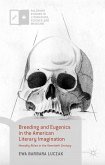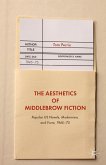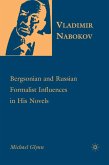This book charts Fitzgerald's use of racial stereotypes to encode the dual nature of his literary ambition: his desire to be on the one hand a popular American entertainer, and on the other to make his mark among the elite members of an international literary field. Taking his cue from some under-appreciated stories, Michael Nowlin argues that Fitzgerald's early use of tropes from blackface minstrelsy anticipated his race-inflected treatment of divided artist figures in the major novels from "The Beautiful and Damned" to the unfinished "The Love of the Last Tycoon." At issue in all these novels, both formally and thematically, is the dynamic state of the modern, multi-faceted, and ethnically diverse American cultural field Fitzgerald was constantly re-negotiating in order to meet his goal of long-term literary success.
Bitte wählen Sie Ihr Anliegen aus.
Rechnungen
Retourenschein anfordern
Bestellstatus
Storno









